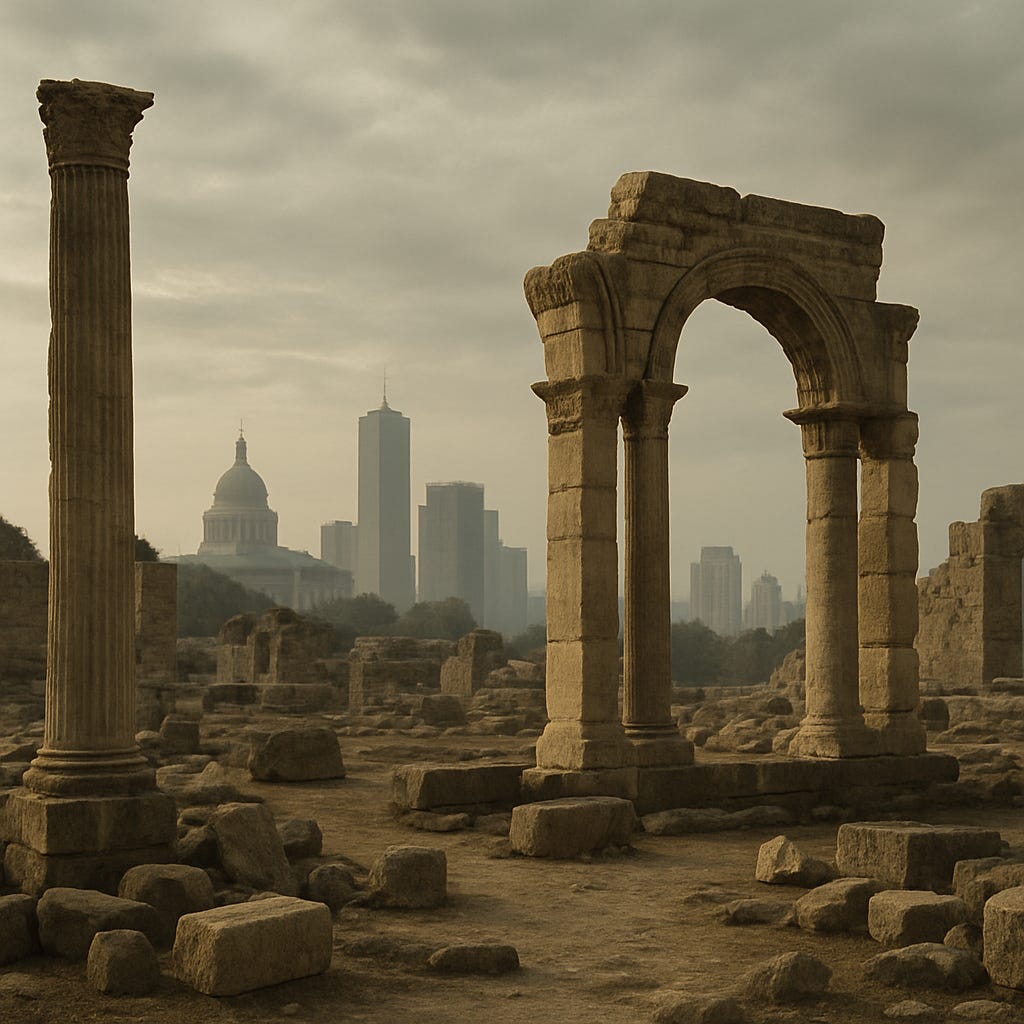Monday Edition: What Makes Empires Fall?
What Makes Empires Fall?
Every empire wants to believe it will last forever. None do. Rome, the Ottomans, Britain, and the Qing Dynasty (and maybe the United States) all looked unconquerable and indefatigable, yet they all fell.
History shows that great powers collapse for clear and measurable reasons. They spend more than they can afford, expand beyond what they can control, and stop working to solve the problems that matter to their people. When that happens, decline begins.
Empires fall in stages. First comes success; everything seems possible: wealth grows, armies expand, and influence spreads. The empire goes through cycles of ups and downs, but is always growing and moving forward. That very growth is the seed of its decline. The system becomes harder to control. Taxes rise, corruption increases, and decisions take longer. Public trust erodes as ordinary people see the benefits of the empire no longer benefiting them and instead going to the elite. When the cost of keeping power becomes higher than the benefit, collapse follows.
Scholars studying Rome, the Ottomans, Britain, and the Qing Dynasty describe the same pattern in different forms. They list hundreds of factors, war, debt, inequality, stagnation, even the lead in the water pipes of Rome, but three stand out in every case.
Overextension happens when a government takes on more responsibility than it can manage. The Roman Empire could no longer defend its borders. The British Empire spent its wealth fighting two world wars. The United States now maintains over 250 military bases across 80 countries, a reach unmatched in history, but one that drains its budget and divides its focus between domestic needs and foreign commitments.
Loss of cohesion begins when leaders stop serving the people they govern. The Ottoman sultans ignored growing poverty and ethnic tension. Qing officials lived in isolation while their provinces starved and rebelled. In the United States, income inequality has reached record highs, public trust in Congress and the presidency is near historic lows, and social divisions are widening across race, class, and ideology. When citizens lose faith that the government acts for them, loyalty fades and order breaks down.
Cultural rigidity occurs when nations refuse to change. The Ottomans rejected new military and industrial technologies. The Qing saw Western innovation as a threat instead of an opportunity. The United States operates on outdated political institutions that no longer reflect its population, gridlocked lawmaking, and resistance to modernizing public systems such as healthcare, education, and infrastructure. When nations cling to systems that no longer work, decline accelerates.
These are not abstract patterns. They describe concrete, measurable stress points, overreach, division, and stagnation that have ended every empire. Whether the United States can reverse them depends on whether it can realign its priorities, rebuild trust, and adapt to a world where power depends on cooperation and equality.
This week, we will study four fallen empires, the Roman, Ottoman, British, and Qing, to see what pushed them past the point of no return and what their decline tells us about where America is now.
There is more cultural perspective on TikTok and YouTube.

 Tiktok failed to load.
Tiktok failed to load.Enable 3rd party cookies or use another browser



